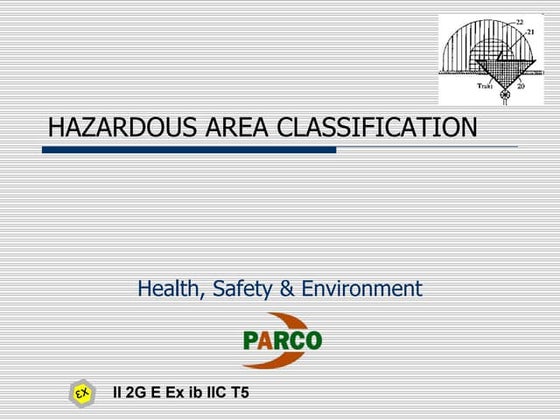Getting The Roar Solutions To Work
Getting The Roar Solutions To Work
Blog Article
The smart Trick of Roar Solutions That Nobody is Talking About
Table of ContentsWhat Does Roar Solutions Do?Everything about Roar SolutionsThe Only Guide for Roar Solutions
In order to safeguard installments from a potential explosion a technique of analysing and identifying a possibly unsafe area is required. The function of this is to make certain the appropriate selection and installation of devices to ultimately stop an explosion and to ensure safety of life.
(https://www.edocr.com/v/kr2y9bbk/thomascarrillo4740/roar-solutions)
No tools must be mounted where the surface temperature level of the tools is above the ignition temperature of the offered hazard. Below are some typical dirt dangerous and their minimal ignition temperature level. Coal Dirt 380C 225C Polythene 420C (melts) Methyl Cellulose 420C 320C Starch 460C 435C Flour 490C 340C Sugar 490C 460C Grain Dirt 510C 300C Phenolic Resin 530C > 450C Aluminium 590C > 450C PVC 700C > 450C Residue 810C 570C The chance of the risk being present in a concentration high adequate to cause an ignition will certainly vary from place to place.
Harmful area electric tools maybe developed for usage in greater ambient temperatures. Area Repair Service By Authorised Worker: Complex testing may not be needed however specific procedures might need to be adhered to in order for the equipment to preserve its 3rd event rating. Each piece of equipment with a dangerous score need to be reviewed individually.
The 10-Second Trick For Roar Solutions
The devices register is a detailed database of equipment records that consists of a minimum set of fields to identify each product's area, technological criteria, Ex classification, age, and ecological data. This info is crucial for monitoring and managing the devices effectively within dangerous locations. On the other hand, for routine or RBI sampling evaluations, the quality will be a combination of Comprehensive and Close examinations. The proportion of In-depth to Close inspections will be determined by the Equipment Danger, which is analyzed based on ignition danger (the probability of a source of ignition versus the chance of a combustible atmosphere )and the unsafe area classification
( Area 0, 1, or 2). This variant will also affect the resourcing needs for work prep work. Once Lots are specified, you can establish sampling plans based upon the sample dimension of each Lot, which describes the variety of random equipment items to be examined. To determine the needed example dimension, 2 aspects need to be reviewed: the dimension of the Great deal and the classification of evaluation, which shows the level of effort that must be used( minimized, regular, or boosted )to the examination of the Lot. By incorporating the classification of examination with the Lot size, you can then develop the appropriate denial standards for a sample, suggesting the allowable number of damaged things found within that example. For more information on this process, please refer to the Energy Institute Guidelines. The IEC 60079 typical recommends that the optimum period in between inspections should not surpass 3 years. EEHA inspections will additionally be carried out outside of RBI projects as part of arranged upkeep and equipment overhauls or repairs. These evaluations can be attributed towards the RBI example sizes within the affected Lots. EEHA examinations are conducted to determine faults in electrical tools. A weighted scoring system is crucial, as a solitary piece of devices might have numerous faults, each with varying degrees of ignition risk. If the mixed rating of both evaluations is less than twice the mistake rating, the Lot is regarded appropriate. If the Whole lot is still considered unacceptable, it has to undergo a full assessment or reason, which may activate more stringent evaluation procedures. Accepted Great deal: The causes of any type of mistakes are identified. If a typical failure setting is discovered, extra equipment might need maintenance. Mistakes are identified by seriousness( Safety and security, Stability, House cleaning ), making certain that immediate issues are assessed and attended to without delay to reduce any type of influence on safety and security or operations. The EEHA database ought to track and tape-record the lifecycle of faults together with the rehabilitative actions taken. Executing a robust Risk-Based Assessment( RBI )method is important for ensuring conformity and safety and security in handling Electrical Equipment in Hazardous Areas( EEHA) (hazardous area course). Automated Mistake Rating and Lifecycle Administration: Easily take care of faults and track their lifecycle to improve evaluation accuracy. The introduction of this support for risk-based evaluation better enhances Inspectivity's position as a best-in-class solution for regulatory conformity, as well as for any asset-centric assessment use case. If you have an interest in learning a lot more, we invite you to request a demonstration and find how our solution can transform your EEHA administration procedures.
Fascination About Roar Solutions

In regards to eruptive danger, a hazardous area is an environment in which an explosive ambience exists (or might be anticipated to be existing) in amounts that need unique precautions for the construction, installation and use of equipment. high voltage courses. In this post we discover the difficulties dealt with in the work environment, the risk control steps, and the required proficiencies to work safely
It issues of contemporary life that we manufacture, store or manage a range of gases or fluids that are considered combustible, and a variety of dusts that are regarded combustible. These materials can, in specific conditions, develop explosive ambiences and these can have significant and awful consequences. Many of us know with the fire triangular remove any kind of one of the 3 aspects and the fire can not occur, yet what does this mean in the context of hazardous locations? When breaking this down right into its most basic terms it is basically: a mix of a specific quantity of release or leak of pop over to this site a certain material or product, blending with ambient oxygen, and the visibility of a source of ignition.
In many circumstances, we can do little about the levels of oxygen airborne, however we can have significant impact on sources of ignition, as an example electric equipment. Harmful areas are recorded on the unsafe area category illustration and are identified on-site by the triangular "EX-SPOUSE" sign. Right here, among various other key info, areas are divided right into three types depending on the risk, the probability and duration that an eruptive ambience will exist; Area 0 or 20 is deemed the most harmful and Area 2 or 22 is deemed the least.
Report this page